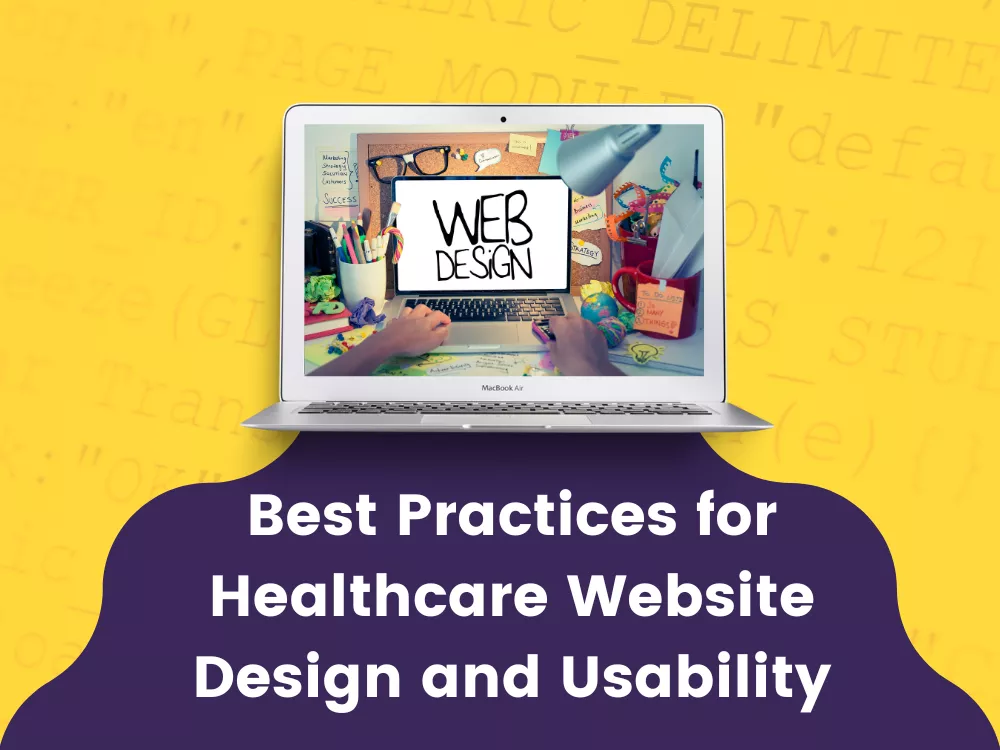20 min read Best Practices for Healthcare Website Design and Usability

In the ever-evolving digital landscape, healthcare website design plays a pivotal role in enhancing patient care, facilitating communication between practitioners and patients, and streamlining administrative processes. If you're a freelancer in the Development & IT category on Xp Freelancer, specializing in website creation, this comprehensive guide will empower you with the knowledge and skills needed to excel in healthcare website design.
Understanding the Healthcare Landscape
Before diving into the intricacies of healthcare website design, it's crucial to grasp the unique challenges and requirements of the healthcare industry. Healthcare professionals operate within a framework of strict regulations, ensuring patient confidentiality, data security, and compliance with standards like the Health Insurance Portability and Accountability Act (HIPAA). Familiarizing yourself with these regulations is foundational to creating websites that meet the industry's specific needs.
User-Centric Design Principles
User experience (UX) is at the forefront of effective website design, and in healthcare, it becomes even more critical. The target audience includes both healthcare professionals and patients, each with distinct needs and expectations. Here are some user-centric design principles to consider:
- Intuitive Navigation: Design clear and logical navigation paths to ensure users can easily find the information they need. Consider the hierarchical structure of menus and the placement of essential elements.
- Mobile Responsiveness: With the prevalence of smartphones and tablets, ensure that your healthcare websites are responsive across various devices. A seamless experience on both desktop and mobile devices is essential for user satisfaction.
- Accessibility: Create websites that are accessible to users with disabilities. Adhere to accessibility standards by implementing proper heading structures, providing alternative text for images, and ensuring keyboard navigation.
- Clear and Concise Content: Healthcare information can be complex. Present content in a clear and concise manner, avoiding jargon where possible. Break down information into digestible sections and utilize multimedia elements for enhanced understanding.
Compliance with Healthcare Regulations
Adherence to healthcare regulations is non-negotiable when designing websites for this industry. HIPAA, in particular, mandates strict standards for protecting patient information. Ensure your websites incorporate:
- Secure Data Transmission: Implement secure methods for transmitting data, such as encryption protocols, to protect patient information during communication.
- Data Encryption: Utilize encryption technologies to safeguard sensitive data stored on the website, ensuring that unauthorized access is mitigated.
- User Authentication: Implement robust user authentication mechanisms to control access to sensitive information. Multi-factor authentication can add an extra layer of security.
Content Management and Organization
Effectively managing and organizing healthcare content is vital for user engagement. Consider these best practices:
- Appointment Scheduling: Many healthcare providers offer online appointment scheduling. Integrate user-friendly scheduling features, allowing patients to book appointments seamlessly.
- Telemedicine Integration: With the growing trend of telemedicine, ensure your websites support functionalities such as video consultations and secure communication channels.
- Integration with Electronic Health Records (EHR) Systems: Streamline information exchange by integrating your websites with common EHR platforms. This ensures seamless communication between different components of the healthcare system.
Emphasis on Security
The sensitivity of healthcare data requires a heightened focus on security. Strengthen your healthcare website designs with these security measures:
- SSL Certificates: Implement Secure Socket Layer (SSL) certificates to secure data transmission over the internet, ensuring that information remains confidential.
- Regular Security Audits: Conduct regular security audits to identify vulnerabilities and address them promptly. Stay informed about the latest security threats in the healthcare IT landscape.
- Data Encryption: Encrypt stored data to protect it from unauthorized access. This includes patient records, appointment details, and any other sensitive information stored on the website.
Patient Engagement Features
Engaging patients through online platforms is becoming increasingly important. Incorporate features that enhance patient engagement, such as:
- Patient Portals: Create secure patient portals where individuals can access their medical records, review test results, and communicate with healthcare providers.
- Secure Messaging: Implement secure messaging systems to facilitate communication between patients and healthcare professionals while maintaining confidentiality.
- Educational Resources: Provide informative content to educate patients about various health topics, treatment options, and preventive measures.
Speed and Performance Optimization
Optimizing the speed and performance of healthcare websites is essential for user satisfaction and search engine visibility. Consider these optimization techniques:
- Image Compression: Compress images to reduce file sizes, ensuring faster loading times without compromising on visual quality.
- Browser Caching: Utilize browser caching to store static files locally, reducing the need for repeated downloads and speeding up page loading.
- Content Delivery Networks (CDNs): Implement CDNs to distribute website content across multiple servers globally, minimizing latency and improving overall performance.
Regular Testing and Quality Assurance
Before launching any healthcare website, conduct thorough testing to identify and rectify potential issues. Test across various devices, browsers, and operating systems, considering functionality, usability, and security. Regular updates and maintenance are also crucial for sustained performance and security.
Feedback and Iteration
Actively seek feedback from healthcare clients and end-users to refine and improve your designs continuously. Use feedback to iterate on your designs, addressing pain points and incorporating valuable insights. A collaborative approach ensures that your healthcare websites evolve to meet changing needs and expectations.
Showcasing Your Expertise on Xp Freelancer
Your portfolio on Xp Freelancer is a reflection of your expertise and capabilities. Showcase your proficiency in healthcare website design by including:
- Relevant Portfolio Pieces: Highlight healthcare website projects you've successfully completed. Provide case studies that demonstrate your problem-solving skills and showcase the positive impact of your designs on healthcare practices.
- Client Testimonials: If possible, include testimonials from healthcare clients who have benefited from your services. Positive feedback adds credibility and builds trust among potential clients.
- Certifications and Credentials: Display any relevant certifications or credentials related to healthcare website design. This enhances your credibility and demonstrates your commitment to maintaining high standards.
In conclusion, mastering healthcare website design is an ongoing journey that requires a deep understanding of industry-specific challenges, adherence to regulations, and a commitment to user-centric design. As a freelancer in the Development & IT category on Xp Freelancer, incorporating these best practices into your healthcare website designs will not only set you apart but also contribute significantly to the advancement of healthcare services in the digital age.
Remember, the impact of your work goes beyond the aesthetics of a website – it directly influences patient care, accessibility, and the efficiency of healthcare practices. Embrace the opportunity to make a meaningful difference in healthcare through your skills and contributions on Xp Freelancer. Your dedication to excellence in healthcare website design will undoubtedly be appreciated by both healthcare professionals and the patients they serve.






































































